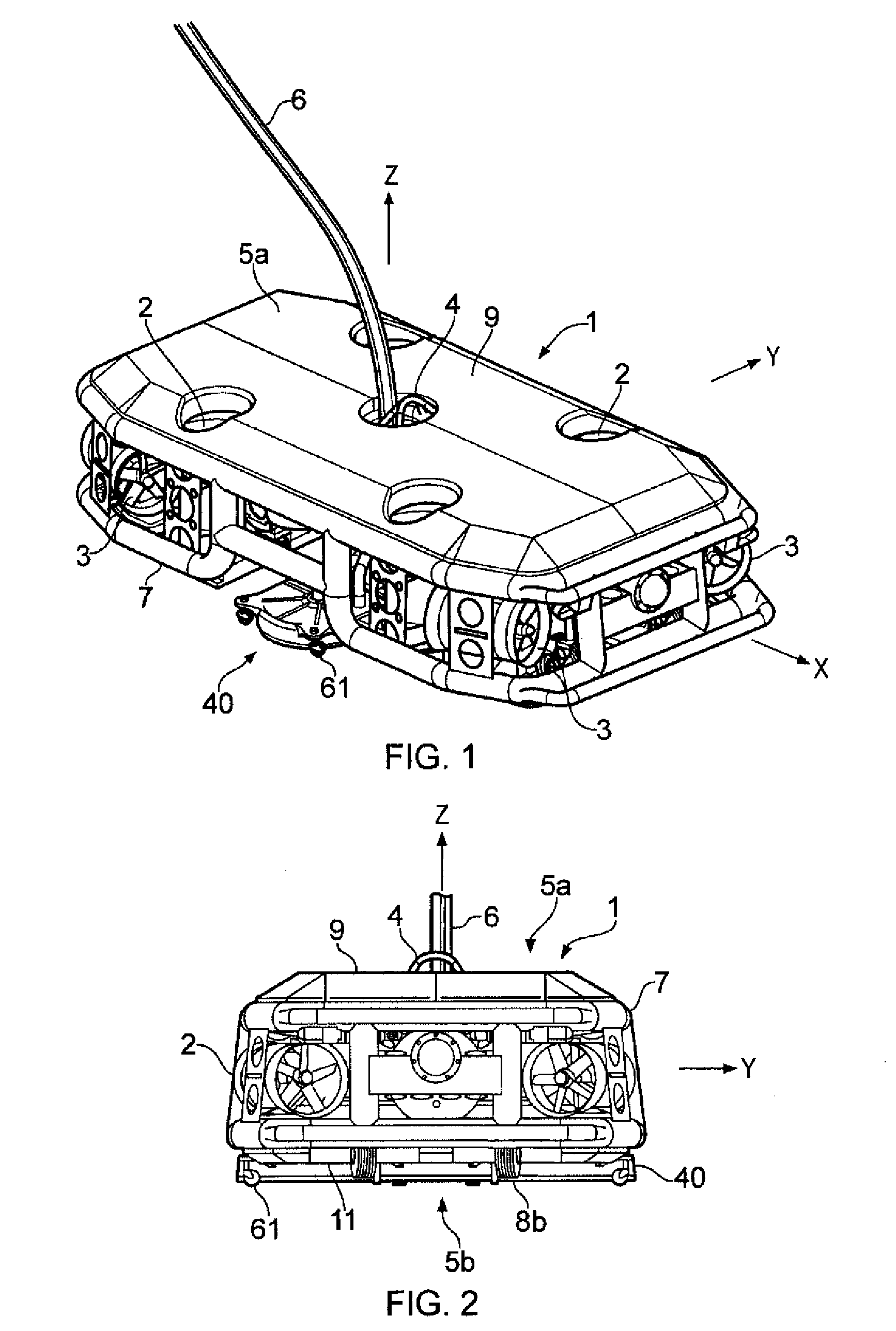Surface-cleaning device and vehicle
a surface cleaning and vehicle technology, applied in waterborne vessels, waterborne equipment, vessel construction, etc., can solve the problems of significant fuel consumption increase, rough surface, and difficulty in developing suitable and practical cleaning equipment for large surfaces such as ships' hulls
- Summary
- Abstract
- Description
- Claims
- Application Information
AI Technical Summary
Benefits of technology
Problems solved by technology
Method used
Image
Examples
Embodiment Construction
[0051]Referring initially to FIG. 1 and FIG. 2, the cleaning robot 1 in the illustrated embodiment basically comprises a tubular frame 7 carrying a cleaning apparatus 40. The cleaning robot 1 is a neutrally buoyant ROV being remotely controlled by an umbilical 6. The umbilical 6 holds power cables and control cables and extend to power and control units (not shown), located for example on a ship or barge on the water surface. The umbilical 6 also holds power and control cables, as well as liquid supply and return hoses, for operation of the cleaning apparatus 40.
[0052]A coordinate system has been defined for the ROV 1, the axes of which intersect the ROV's centre of gravity (CG; see also FIGS. 20 and 21), and where the x axis defines a roll axis; the y axis defines a pitch axis; and the z axis defined a yaw axis. When floating in the water in the state shown in FIGS. 1 and 2, the z axis points upwards and the ROV has an upper side 5a, to which the umbilical 6 and a lifting padeye 4 ...
PUM
 Login to View More
Login to View More Abstract
Description
Claims
Application Information
 Login to View More
Login to View More - R&D
- Intellectual Property
- Life Sciences
- Materials
- Tech Scout
- Unparalleled Data Quality
- Higher Quality Content
- 60% Fewer Hallucinations
Browse by: Latest US Patents, China's latest patents, Technical Efficacy Thesaurus, Application Domain, Technology Topic, Popular Technical Reports.
© 2025 PatSnap. All rights reserved.Legal|Privacy policy|Modern Slavery Act Transparency Statement|Sitemap|About US| Contact US: help@patsnap.com



